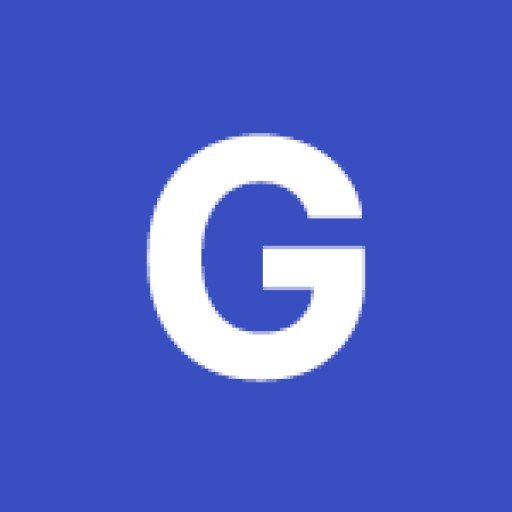[IMPACT] Please describe your proposed solution.
The Digital Asses Disclosure Framework (DADF) is a solution to decentralize a traditional business function; accessing capital markets. This requires buy-in from several key players, but the technology is available now and is what this proposal enables.
DADF II: Video Presentation
After the successful completion of phase 1 of DADF, this second phase of our proposed roadmap is the following:
-
DADF II aims to create a framework for the ultimate, successful deployment of digital equity tokens on the Cardano blockchain for small/medium sized businesses in a regulatory compliant manner that has the support of regulators, digital exchanges, companies, lawyers, accountants and investors.
-
The solution includes Wolfram Language technology and Cardano blockchain to allow submissions of financial documents from businesses on chain and enabling regulators to monitor/search/retrieve these required disclosures with tools and techniques that make regulatory compliance far more efficient and accessible.
-
Part 1 of DADF completed the backend functionality, Part 2 of DADF completes the front end functionality.
DADF II is being aimed as a globally licensed framework to digital asset exchanges, in accordance with regulations, to support the vast majority of corporations that are smaller than those that typically raise capital on the traditional markets (NYSE, NASDAQ or TSX). This would strongly encourage digital exchanges to become Cardano-blockchain compliant.
- Digital equity tokens can allow small and medium-sized businesses to access capital effectively; however, current implementations have not succeeded. This is a result of fragmented platform of policies, weak regulatory support and a poor disclosure framework desired by regulators and investors. We are proposing the second part of our innovative technology and policy framework that can transform how companies access capital and how investors can have access to these companies.
The CEO of the framework, Shaun Cumby, has extensive experience between securities-based prospectus offerings and a strong understanding of blockchain technology. Shaun has used and requires the Wolfram technology stack for this solution and will focus on the needs of regulators, exchanges, companies and investors. Wolfram Blockchain Labs will facilitate the technological aspects of this second part proposal, as we have already demonstrated capabilities for completion in the first part.
- Shaun has met with digital and traditional exchanges, law firms, accounting firms and regulators in both the US and Canada. A large law firm in Canada has committed to the project, and we are in discussions with a Big Four accounting firm. These partners will focus on the policy aspects of the DADF that need to be regulatory compliant while also creating the electronic forms for companies to stay in continuous compliance in a timely and cost-effective manner. The goal is to onboard a solution with the Toronto Stock Exchange as a partner first.
This solution is a token-based implementation of disclosure documents and prospectus, which create immutable public records of disclosures and off-chain storage of document details. We will create tools to assist regulators in market auditing and continuous disclosure monitoring. This is a new and unique use case for corporate business NFTs, which has the ability to onboard traditional entities into the Cardano ecosystem.
We have completed part 1 of DADF which took 4 months to complete and within budget, which was approved and officially closed out in May 2023. We aim for the same 4 month timeline in part 2 in for this proposal in Fund 10.
[IMPACT] How does your proposed solution address the challenge and what benefits will this bring to the Cardano ecosystem?
Our proposed solution, the Digital Asset Disclosure Framework (DADF), directly addresses the challenge of "Products and Integrations" by introducing a novel approach to accessing the capital markets and fostering regulatory compliance on the Cardano blockchain.
- Businesses submit financial documents which are minted on-chain
- Accounting and law firms, regulators, and investors search/retrieve these documents to do due diligence
- Wolfram technology facilitates the front-end and back-end solution of the framework for convenience and ease of use
- The intention is that by the end of this submission and review cycle, a business will reach regulatory compliance in a cost effective and transparent process.
- This cost efficiency and transparency are the key's to getting regulatory adoption, which can happen across global jurisdictions.
- Ultimately, businesses can then launch digital equity tokens and access liquid capital markets in a way they've never could before.
By enabling the deployment of digital equity tokens through our auditing and disclosure framework, we offer a high-impact use case that brings several benefits to the Cardano ecosystem.
The disclosure of financial reporting, particularly on a continuous basis, has been a challenge for regulators, companies and investors in the digital-asset space. DADF seeks to address the parties' concerns with a framework that is completely digital and electronic. The flexibility and immutability of the Cardano blockchain combined with the technology of the Wolfram Language will allow us to create something with profound impact and reach a global audience. Below are several ways we address the challenge:
-
Expanded Use Cases: The DADF unlocks new possibilities for businesses, investors, regulators, accounting firms, and law firms to engage with the Cardano blockchain. It provides a platform for businesses to tokenize their assets and raise capital while ensuring compliance, transparency, and equitable outcomes.
-
Increased Adoption: By offering a regulatory-compliant path for businesses to access the capital markets, our solution encourages more entities to choose the Cardano blockchain as their preferred platform for tokenization. This increased adoption enhances the overall activity and engagement within the Cardano ecosystem.
-
Feedback and Innovation: The implementation of the DADF fosters a feedback loop between businesses, investors, regulators, and other stakeholders. As they interact with the framework, valuable insights and suggestions for improvement will emerge, driving further innovation in the ecosystem. This iterative process will contribute to the development of even more impactful products and integrations.
-
Thriving Ecosystem: The DADF contributes to the creation of a thriving ecosystem within Cardano by attracting a diverse range of participants. As businesses tokenize their assets and investors engage with these offerings, the ecosystem becomes more dynamic, attracting developers, entrepreneurs, and other stakeholders who see the potential for building complementary products and integrations.
In summary, our proposed solution, the Digital Asset Disclosure Framework, directly addresses the challenge by providing a regulatory-compliant pathway for businesses to access the capital markets on the Cardano blockchain. As a product and application, DADF not only expands the use cases of NFTs for Cardano but also drives adoption, encourages feedback and innovation, and contributes to the development of a thriving ecosystem of products and integrations. It is also a vision supported by investors.
[IMPACT] How do you intend to measure the success of your project?
There are two ways to measure success of this project: short-term and long-term success. To be direct, in this proposal we will focus on the short-term measurements of success, while keeping the long-term measurements in mind.
In the short term, an integration test of the working submission functionality combined with the search and retrieval functionality is the best way to measure success. We will provide evidence that, through a user interface, a generic document submitted through the web form is minted on-chain (Cardano) and can then be retrieved from the data base afterward. This process represents what the actual users workflow would be.
Technical demonstrations of the completion of the project will be recorded as a video and shared in the close out report. Shaun Cumby will share the results of simulation testing with potential equity partners; like the Toronto Stock Exchange (TSX), law and accounting firms, and investors.
The long term ideal measure of success for this project is to establish a partnership with the Toronto Stock Exchange, where they would apply DADF to their digital asset trading platform in a way that combines accounting and legal frameworks. Upon establishing partnership with TSX, a test of 10 small businesses would pilot the DADF, likely over a 9-12 month period.
[IMPACT] Please describe your plans to share the outputs and results of your project?
We will share the outputs and results of the project in the following ways:
- Technical demos of system functionality (recorded video)
- Simulation testing (documenting user roles)
- General demos with key stakeholders (report from meetings)
Shaun Cumby is building partnerships and collaborative relationships with exchanges, regulatory entities, accounting firms, and law firms. These relationships allow us to work closely with stakeholders to address their specific requirements, ensure regulatory compliance, and incorporate their feedback into the framework. The results of the demonstrations will be key to these groups.
[CAPABILITY/ FEASIBILITY] What is your capability to deliver your project with high levels of trust and accountability?
Our capability to deliver the project with high levels of trust and accountability is grounded in several key factors:
-
Track Record: Wolfram Blockchain Labs (WBL) has a good track record in successfully completing Catalyst projects, including four already completed projects and three nearly complete since Fund 8. This experience has led to developing our ability to meet project objectives, timelines, and budgetary constraints.
-
Experienced Team: Our team comprises professionals from diverse disciplines, including blockchain, finance, Wolfram technology, regulatory compliance, and legal/accounting expertise. This multidisciplinary approach allows us to bring a comprehensive and holistic perspective to the project, ensuring that all aspects are addressed with a high level of expertise.
-
Shaun Cumby's expertise: With Shaun Cumby's firsthand experience and success in launching Bitcoin/Ethereum ETFs on the Toronto Stock Exchange, we have an individual who directly understands the challenges and requirements of accessing capital markets and compliance regulations. This expertise enhances our understanding of the project's objectives and enables us to develop appropriate solutions.
-
On-Time Delivery: We have already completed the first part of the Digital Asset Disclosure Framework (DADF) on time and within budget. This successful completion demonstrates our ability to manage project resources efficiently and effectively. The recognition and recommendation we received from the Cardano catalyst community further reinforce our capability to deliver projects with accountability and quality.
Our track record, experienced team, firsthand expertise, and adherence to strong financial management practices is why we're well-suited to deliver the project with high levels of trust and accountability.
[CAPABILITY/ FEASIBILITY] What are the main goals for the project and how will you validate if your approach is feasible?
The main goals of the project are to create a front-end implementation for both search/retrieval functionality and document submission functionality. We aim to development an integrated system that facilitates the seamless submission, storage, and retrieval of financial documents. The objective is to establish a cohesive and efficient process within the framework of the DADF, ensuring a smooth and streamlined experience for all users/stakeholders involved.
[CAPABILITY/ FEASIBILITY] Please provide a detailed breakdown of your project’s milestones and each of the main tasks or activities to reach the milestone plus the expected timeline for the delivery.
- Design and implement a UI wireframe for submitting a financial document (1 month)
- Prototype of submission web form
- Notification system off successful submission
- Notification system of error handling
- Design users/roles functionality
- Implement document submission functionality as a web form in the EPC (1.5 months)
- Develop main submission form
- Testing submission form - success and error handling with next step prompts
- Implement and develop users/roles functionality
- Test users and roles from admin standpoint
- Design and implement a UI wireframe for search and retrieval functionality (1 month)
- The UI is designed to enable searching by company name, type of financial document, addresses, transaction hash or date range. The UI will allow the ability to have the search results be sorted on keys such as name, date or document type
- Filters with appropriate UI elements, for example: input fields for selection by a company name, pull down menu for selection on categorical fields such as document type, date range selection etc
- Design and mock-up of search results page. Elements will include: a section for summary of results, what level of details to include in the results, ability to download the results
- Implement search and retrieval functionality as a web form in the EPC (1.5 months)
- Connect various UI elements to the appropriate back end for search and retrieval operations
- Notification of error and description of error type, with recommended action/next step
- Use Wolfram Language's built in natural language (NLP) capabilities for search assistance
- Develop and implement the search results page with appropriate interactive elements and ability to download the results
- Testing search form functionality and the results page
[CAPABILITY/ FEASIBILITY] Please describe the deliverables, outputs and intended outcomes of each milestone.
- Design and implement a UI wireframe for submitting a financial document.
- Deliverables: UI wireframe design for the document submission functionality.
- Outputs: A visually designed wireframe that represents the layout and components of the document submission UI web page(s).
- Intended Outcome: To have a clear and well-designed UI wireframe that serves as a blueprint for implementing the document submission functionality.
- Milestone 2: Implement document submission functionality as a web form in the EPC.
- Deliverables: Implementation of a web form for submitting financial documents within the Wolfram Enterprise Private Cloud (EPC).
- Outputs: A functioning web form integrated into the EPC that allows users to input and submit financial documents. Successful submission generates a unique hash and identifier for the minted NFT, with off-chain metadata stored in the SQL database.
- Intended Outcome: To enable users to securely submit financial documents through a web form. The implementation ensures proper data storage and linkage to the Cardano blockchain through NFT minting.
- Milestone 3: Design and implement UI wireframe for the search and retrieval functionality.
- Deliverables: UI wireframe design for the search functionality.
- Outputs: A visually designed wireframe that represents the layout and components of the search UI and search results web page(s).Wireframe includes search criteria options, sorting capabilities, and display formats for search results.
- Intended Outcome: To have a well-designed UI wireframe that enables users to search and retrieve specific financial documents based on various criteria. The wireframe ensures a user-friendly and intuitive search experience, enhancing usability and efficiency.
- Milestone 4: Implement search and retrieval functionality as a web form in the EPC.
- Deliverables: Implementation of the search and retrieval functionality within the Wolfram Enterprise Private Cloud (EPC).
- Outputs: A functional web form that allows users to input search criteria and retrieve matching financial documents. Search results are appropriately formatted and displayed as web pages.
- Intended Outcome: To provide users with a reliable and efficient method to search and retrieve specific financial documents based on their desired criteria.The implementation ensures accurate retrieval of relevant information, facilitating auditing and analysis processes.
These milestones collectively aim to deliver a comprehensive system for submitting, storing, and retrieving financial documents, ensuring a streamlined and efficient process within the DADF framework.
[RESOURCES & VALUE FOR MONEY] Please provide a detailed budget breakdown of the proposed work and resources.
- Design and implement a UI wireframe for submitting a financial document - ₳62,500
- Prototype of submission web form
- Notification system of successful submission
- Notification system of error handling
- Design users/roles functionality
- Implement document submission functionality as a web form in the EPC - ₳145,700
- Develop main submission form
- Testing submission form - success and error handling with next step prompts
- Implement and develop users/roles functionality
- Test users and roles from admin standpoint
- Design and implement a UI wireframe for search and retrieval functionality - ₳62,500
- The UI is designed to enable searching by company name, type of financial document, addresses, transaction hash or date range. The UI will allow the ability to have the search results be sorted on keys such as name, date or document type
- Filters with appropriate UI elements, for example: input fields for selection by a company name, pull down menu for selection on categorical fields such as document type, date range selection etc
- Design and mock-up of search results page. Elements will include: a section for summary of results, what level of details to include in the results, ability to download the results
- Implement search and retrieval functionality as a web form in the EPC - ₳145,700
- Connect various UI elements to the appropriate back end for search and retrieval operations
- Notification of error and description of error type, with recommended action/next step
- Use Wolfram Language's built in natural language (NLP) capabilities for search assistance
- Develop and implement the search results page with appropriate interactive elements and ability to download the results
- Testing search form functionality and the results page
[RESOURCES & VALUE FOR MONEY] Who is in the project team and what are their roles?
Shaun Cumby, CEO of DADF
Shaun Cumby is the CEO of the framework and has extensive experience between securities based on prospectus offering and a strong understanding of blockchain technology, the Wolfram Language and the needs of regulators, exchanges, companies and investors.
Jon Woodard, CEO
Jon Woodard is the CEO at Wolfram Blockchain Labs, where Jon coordinates the decentralized projects that connect the Wolfram Technology ecosystem to different DLT ecosystems. Previously at Wolfram Research Jon worked on projects at the direction of Wolfram Research CEO Stephen Wolfram and prior to that was a member of the team who worked on the monetization strategies and execution for Wolfram|Alpha. Jon has a background in economics and computational neuroscience. He enjoys cycling in his spare time.
Jason Cawley, Wolfram Solutions
Jason Cawley has been with Wolfram Research for 22 years. His academic background is in the social sciences and analytic methods in the social sciences, including finance and economics, statistics, modeling and simulation. He worked on core Mathematica development in those areas, then worked on Wolfram|Alpha from its inception to public release, including most of its finance features. Jason was project architect and technical lead on various consulting projects for over the next decade. He has been the Director of Wolfram Solutions since 2020. Jason lives in Phoenix, AZ.
Onkar Singh, Project Director
Onkar Singh is a project director in Wolfram Solutions and has been with Wolfram Research for 18 years. He joined Wolfram Solutions in 2011 and has worked both as a developer and technical lead on numerous projects. He has led numerous consulting projects including custom Wolfram|Alpha deployments, and has vast experience in working closely with enterprise clients. Prior to working at Solutions, he worked in the technical support for several years and led the Technology Services Group where he helped customers with various Wolfram technologies. Onkar enjoys playing tennis in his spare time.
Johan Veerman, CTO
Johan Veerman is General Manager at Wolfram Research South America and CTO at Wolfram Blockchain Labs. Previously he has been Science Advisor at the Ministry of Foreign Affairs in Peru and Chief Scientist on two Antarctic expeditions. Johan's background is on physics and business management. He enjoys playing soccer and is a certified cave diver.
Steph Macurdy, Head of Research and Education
Steph Macurdy has a background in economics, with a focus on complex systems. He attended the Real World Risk Institute in 2019, lead by Nassim Taleb, and has been investing in the crypto asset space since 2015. He previously worked for Tesla as an energy advisor and Cambridge Associates as an investment analyst. Steph is a youth soccer coach in the Philadelphia area and is interested in permaculture.
Gabriela Guerra Galan, Project Manager
Gabriela Guerra Galan: Gabriela has 15+ years of experience leading projects. She is a certified PMP and Product Owner with bachelor's degree in Mechatronical Engineering, complemented by a master's degree in Automotive Engineering. As the co-founder of Bloinx, a startup that secured funding from the UNICEF Innovation Fund, she has demonstrated a passion for driving innovation and social impact.
Jesús Hernández, Principal Consultant
Jesús Hernández is a Principal Consultant with Wolfram Solutions. He has been with the company for ten years and is continually learning how Wolfram technology can be applied in new areas. He has a background in theoretical atomic physics. Jesús enjoys cooking, listening to almost all forms of music, and watching his favorite sports teams inevitably lose.
Significantly, our project execution will benefit from the invaluable contribution of numerous additional skilled team members.
[RESOURCES & VALUE FOR MONEY] How does the cost of the project represent value for money for the Cardano ecosystem?
The total addressable market of digital equity tokens (yes, they would be considered securities) of small to medium-sized businesses around the world is in the trillions. However, current regulations in even the most progressive financial markets (USA/Canada) do not know how to handle digital equity tokens. Therefore, the DADF introduces the solution for regulators to adopt which can accelerate a businesses ability to access the capital markets and enhance their growth potential. The total addressable market here is huge and it only requires one regulatory body to demonstrate it's usefulness. DADF will begin in Canada and expand to the USA afterwards. Onboarding businesses to access capital markets directly through Cardano is not a straightforward solution and not just a simple, technological one. It requires many teams bringing the vision to life and that's why we're asking for ~$120,000 to fund this project.





